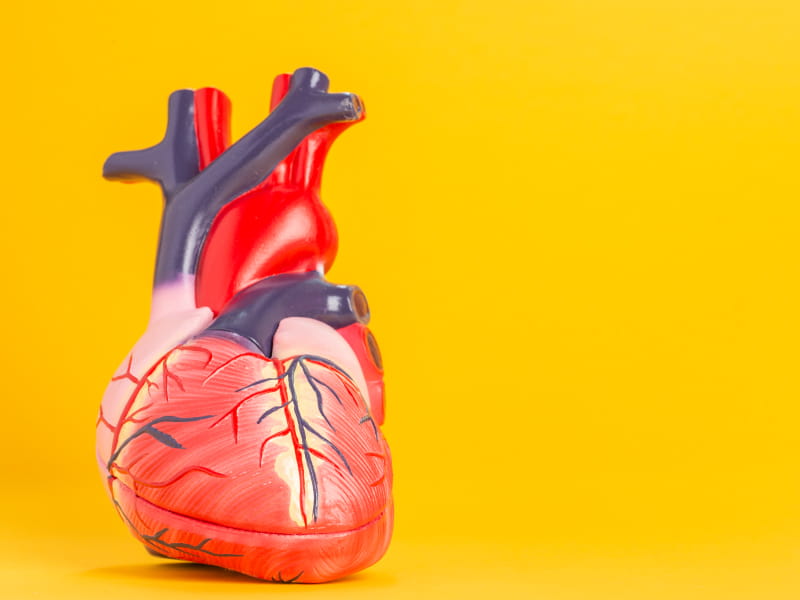Expert heart advice for rare genetic muscle disorder
By American Heart Association News

A rare, inherited muscle disorder that occurs in about 1 in 8,000 people, myotonic dystrophy also can affect the heart and other organs. A new set of expert recommendations offers guidance for managing the progressive condition.
"Your average cardiologist doesn't see this all the time, so it can often get overlooked," said lead author, Dr. Elizabeth McNally. "We want to make sure people are aware of what to look for and what the recommendations are."
Myotonic dystrophy has two forms. The more common, DM1, typically develops in people in their 20s, 30s and 40s. It can cause progressive muscle wasting, weakness, pain and cramping. Many people with the condition have difficulty relaxing muscles. After gripping something, for example, they may have trouble extending their fingers. Over time, it can lead to severe disability and difficulties breathing and swallowing.
Heart abnormalities can impact more than half of myotonic dystrophy patients, and people with the condition should undergo regular screening by a cardiologist familiar with neuromuscular diseases, according to the new report published Thursday in the Journal of the American Heart Association. "Cardiac surveillance in DM can be lifesaving," the authors wrote.
DM1 also can develop in children younger than 10. Those patients may have cognitive impairment, delayed speech, mood disorders and other developmental delays.
"Most (children) begin to have more serious problems when they reach mid-adulthood," said Dr. Takeshi Tsuda, a pediatric cardiologist at Nemours/Alfred I. duPont Hospital for Children in Wilmington, Delaware.
The other, less common form, DM2, is caused by a mutation in a different gene, and its symptoms are usually milder. Unlike the more prevalent form, it first affects the muscles close to the center of the body, particularly shoulders, neck, hips and elbows. The disorder progresses more slowly, and over time can impact mobility.
Both types are associated with an increased risk for heart problems, including arrhythmias, cardiomyopathy, heart failure, heart attack and stroke. Patients with myotonic dystrophy also are at much greater risk for sudden cardiac death.
"Even without any clear muscular presentation, these patients can die suddenly" from heart rhythm issues and defects in how electrical impulses travel through the heart, Tsuda said. He was not part of the new guidance report but was an author on a 2017 American Heart Association statement about neuromuscular diseases.
Myotonic dystrophy also can cause sleep disorders, cataracts, cancer, diabetes, heart disease, respiratory issues and other health problems. "We think of it as predominantly affecting the muscles and the heart muscle, but it can also affect lots of other cells in the body," McNally said.
Because the condition can hit so many different organs, the authors of the new consensus report suggest a care strategy that involves a neurologist, pulmonologist and cardiologist.
McNally advised those with a family history of myotonic dystrophy get tested for it as soon as possible, noting that simple blood and saliva tests are available.
Those diagnosed with the condition should be monitored using tools such cardiac imaging (echocardiography or MRI) and heart monitoring. "In the future, we hope more of this monitoring can be done using wrist devices, but we're not quite there yet," McNally said.
When cardiac problems are detected, more active interventions such as medication or even a device like a pacemaker or defibrillator may be warranted.
According to McNally, the goal is to not only save lives but to improve the quality of life for people living with myotonic dystrophy.
"If your heart rate is beating too fast, it doesn't let you exercise or do the things that you want to do, and that can be very limiting," McNally said. Ongoing research may point to a more positive future for people with the condition.
"Molecularly and genetically, we know precisely where the defect is in these disorders, and there is a lot of interest in how to tackle that," she said. "There's a lot of hope."
If you have questions or comments about this story, please email [email protected].





